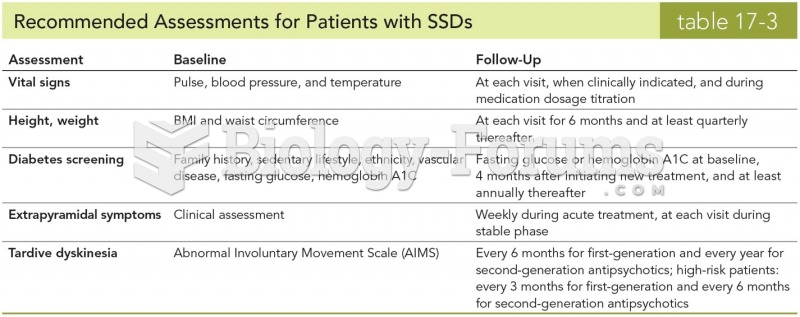Answer to Question 1
A, C
There are two approaches for a comprehensive assessment. Gordon's Functional Health Patterns involves use of a structured database format, based upon an accepted theoretical framework or practice standard. Another approach for conducting a comprehensive assessment is the problem-focused approach. The nurse should focus on the patient's situation and begin with problematic areas. By using Nursing Intervention Classification nurses learn the common interventions recommended for the various NANDA-I nursing diagnoses. The Nursing Outcome Classification system is a classification system of nursing-sensitive outcomes. One of its purposes is to identify, label, validate, and classify nursing-sensitive patient outcomes. A nursing diagnosis is a clinical judgment about individual, family, or community responses to actual and potential health problems or life processes that the nurse is licensed and competent to treat and occurs after assessment.
Answer to Question 2
D
Age-related macular degeneration occurs when the macula (specialized portion of the retina responsible for central vision) degenerates as a result of aging and loses its ability to function efficiently. An early sign includes distortion that causes edges or lines to appear wavy. In later stages, patients may see dark or empty spaces that block the center of vision. Cataract is clouding of the lens in the eye that affects vision. Interferes with passage of light through the lens and reduces the light that reaches the retina. Cataracts usually develop gradually and often result in cloudy or blurry vision, glare, double vision, and poor night vision. Glaucoma is a slowly progressive increase in intraocular pressure that causes progressive pressure against the optic nerve. At first, vision stays normal, and there is no pain. If left untreated, there may be a loss of peripheral (side vision). Diabetic retinopathy are pathological changes of the blood vessels of the retina secondary to increased pressure resulting in hemorrhage, macular edema, and reduced vision or vision loss.







